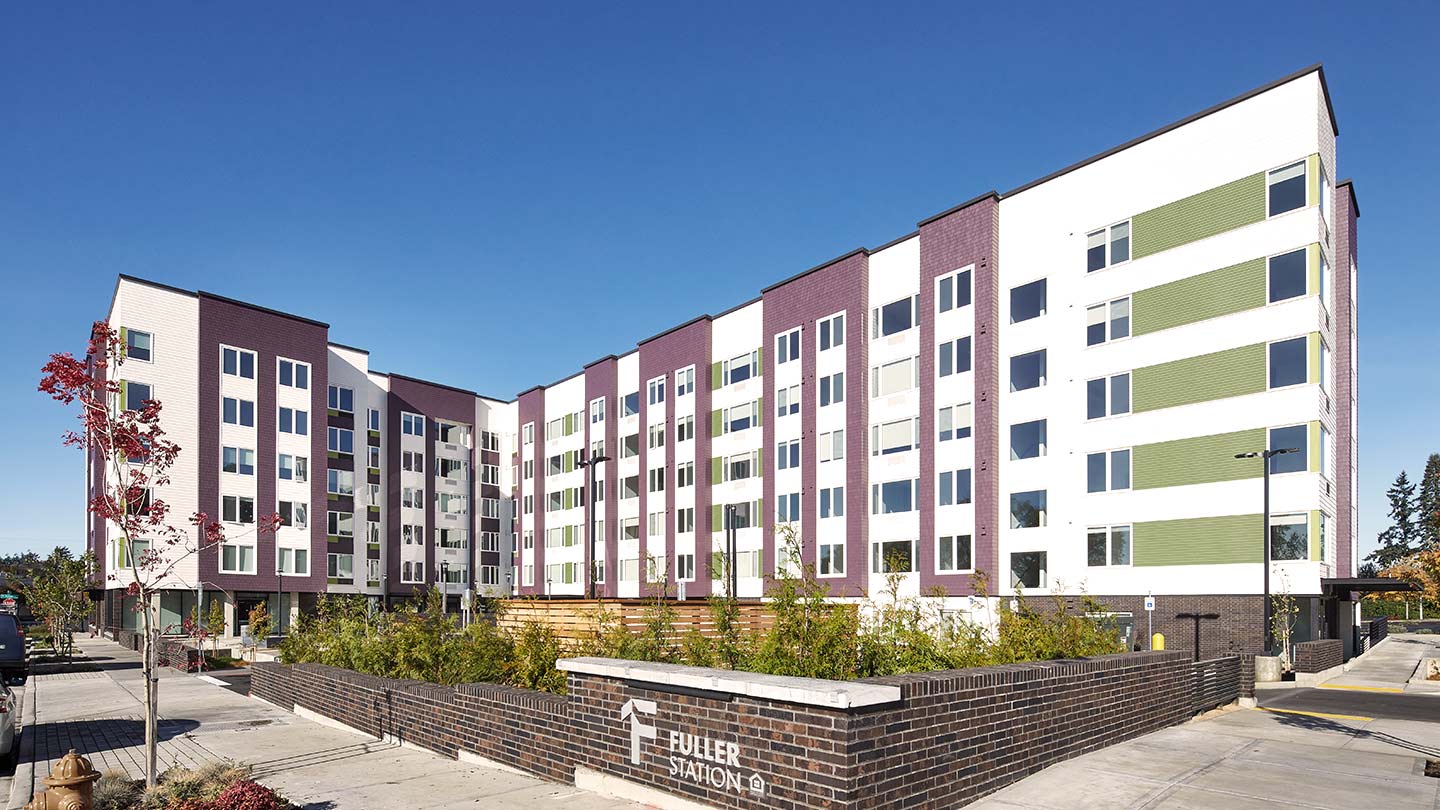From startups to legacy brands, you're making your mark. We're here to help.
-
Innovation Economy
Fueling the success of early-stage startups, venture-backed and high-growth companies.
-
Midsize Businesses
Keep your company growing with custom banking solutions for middle market businesses and specialized industries.
-
Large Corporations
Innovative banking solutions tailored to corporations and specialized industries.
-
Commercial Real Estate
Capitalize on opportunities and prepare for challenges throughout the real estate cycle.
-
Impact Banking & Advisory
When our communities succeed, we all succeed. Local businesses, organizations and community institutions need capital, expertise and connections to thrive.
-
International Banking
Power your business' global growth and operations at every stage.
Key Links
Prepare for future growth with customized loan services, succession planning and capital for business equipment.
-
Asset Based Lending
Enhance your liquidity and gain the flexibility to capitalize on growth opportunities.
-
Equipment Financing
Maximize working capital with flexible equipment and technology financing.
-
Trade & Working Capital
Experience our market-leading supply chain finance solutions that help buyers and suppliers meet their working capital, risk mitigation and cash flow objectives.
-
Syndicated Financing
Leverage customized loan syndication services from a dedicated resource.
-
Commercial Real Estate
Capitalize on opportunities and prepare for challenges throughout the real estate cycle.
-
Employee Stock Ownership Plans
Plan for your business’s future—and your employees’ futures too—with objective advice and financing.
Key Links
Serving the world's largest corporate clients and institutional investors, we support the entire investment cycle with market-leading research, analytics, execution and investor services.
-
Institutional Investors
Putting your long-tenured investment teams on the line to earn the trust of institutional investors.
-
Markets
Direct access to market leading liquidity harnessed through world-class research, tools, data and analytics.
-
Prime Services
Helping hedge funds, asset managers and institutional investors meet the demands of a rapidly evolving market.
-
Global Research
Leveraging cutting-edge technology and innovative tools to bring clients industry-leading analysis and investment advice.
-
Securities Services Solutions
Helping institutional investors, traditional and alternative asset and fund managers, broker dealers and equity issuers meet the demands of changing markets.
Key Links
Providing investment banking solutions, including mergers and acquisitions, capital raising and risk management, for a broad range of corporations, institutions and governments.
-
Center for Carbon Transition
J.P. Morgan’s center of excellence that provides clients the data and firmwide expertise needed to navigate the challenges of transitioning to a low-carbon future.
-
Corporate Finance Advisory
Corporate Finance Advisory (“CFA”) is a global, multi-disciplinary solutions team specializing in structured M&A and capital markets. Learn more.
-
Development Finance Institution
Financing opportunities with anticipated development impact in emerging economies.
-
Sustainable Solutions
Offering ESG-related advisory and coordinating the firm's EMEA coverage of clients in emerging green economy sectors.
-
Mergers and Acquisitions
Bespoke M&A solutions on a global scale.
-
Capital Markets
Holistic coverage across capital markets.
Your partner for commerce, receivables, cross-currency, working capital, blockchain, liquidity and more.
Key Links
A uniquely elevated private banking experience shaped around you.
-
Banking
We have extensive personal and business banking resources that are fine-tuned to your specific needs.
-
Investing
We deliver tailored investing guidance and access to unique investment opportunities from world-class specialists.
-
Lending
We take a strategic approach to lending, working with you to craft the right financing solutions matched to your goals.
-
Planning
No matter where you are in your life, or how complex your needs might be, we’re ready to provide a tailored approach to helping your reach your goals.
Whether you want to invest on your own or work with an advisor to design a personalized investment strategy, we have opportunities for every investor.
-
Invest on your own
Unlimited $0 commission-free online stock, ETF and options trades with access to powerful tools to research, trade and manage your investments.
-
Work with our advisors
When you work with our advisors, you'll get a personalized financial strategy and investment portfolio built around your unique goals-backed by our industry-leading expertise.
-
Expertise for Substantial Wealth
Our Wealth Advisors & Wealth Partners leverage their experience and robust firm resources to deliver highly-personalized, comprehensive solutions across Banking, Lending, Investing, and Wealth Planning.
Explore a variety of insights.
Key Links
Insights by Topic
Explore a variety of insights organized by different topics.
Key Links
Insights by Type
Explore a variety of insights organized by different types of content and media.
Key Links
We aim to be the most respected financial services firm in the world, serving corporations and individuals in more than 100 countries.
Key Links
- Insights
- Real Estate
- Commercial Real Estate
- Historic Tax Credit certification
Narrator:
The Federal Historic Tax Credit (HTC) Program provides low-cost capital to real estate developers who agree to preserve historic building elements. The credit can be used for a wide variety of real estate projects. The Historic Tax Credit certification process is complex. But research, preparation, and the solid understanding of the process can help you satisfy its requirements. Along the way, we are happy to share industry information about financing structures and third parties who can help improve your application. Typically, we encourage our customers to consider hiring an industry consultant for help throughout the HTC application process.
Once your project is eligible, you can begin the 3-part application process. In part 1, you present information about the significance and appearance of the building. The property must be listed in the National Register of Historic Places or be certified as contributing to a registered historic district's significance. We recommend contacting JPMorgan Chase once Part 1 has been approved to set up discussions about financing structure early on. For Part 2, you need to describe the building's condition and the planned renovations, which must meet the National Park Services' (NPS) Substantial Rehabilitation Test. For Part 3 after the project is done, you submit proof that the work was completed as originally proposed according to NPS standards for historic preservation. The building must be used as an income producing purpose for at least five years after rehabilitation.
You'll submit each part of the application form to your State Historic Preservation Office (SHPO, or Shi-poh) which may request more information and conduct site visits. As outlined on the U.S. Technical Preservation Services website, SHOP then sends its recommendation to the National Park Service for final approval.
Upon completion of the project milestones, you become eligible to receive low-cost capital from JPMorgan Chase. JPMorgan Chase is here to help you with HTC capital. Contact one of our bankers today.
Through the federal Historic Preservation Tax Incentives program, commonly known as the Historic Tax Credit (HTC) program, real estate developers can transform buildings. The program can help convert office buildings and shuttered factories into apartments, or turn former hospitals into schools and community centers.
A growing number of affordable housing projects also use the HTC program. “We’re doing a lot of public housing with buildings built as recently as the ‘60s and ‘70s,” said Cindy Hamilton, President of Heritage Consulting Group.
Congress enacted the tax credit program as an incentive to preserve historic building elements. The HTC program can also be an economic development tool, as developers often create jobs and revenue to revitalize distressed communities.
How HTC works
The HTC program is an indirect federal subsidy that finances the rehabilitation of historic buildings. The federal government provides the financial incentive to real estate developers in the form of a 20% tax credit for qualified expenditures.
However, many developers aren’t in a position to use the tax credits. Instead, banks or other third parties invest in the credits to raise equity funding for the HTC project, reducing the amount of debt financing developers need for the property’s rehab.
Significant time and effort go into obtaining HTC approval for these projects. That work begins with determining a property’s eligibility.
HTC eligibility
To be eligible for the HTC program, a building must be:
- At least 50 years old and have certified historical significance
- Rehabbed according to Department of Interior requirements
- Used for income-producing purposes for at least five years
Federal HTC application and approval
Once the project is determined eligible, the developer can begin the U.S. Technical Preservation Services’ three-part application process with their local state historic preservation office (SHPO). These offices may request more information and conduct site visits before sending recommendations to the National Park Service (NPS), which provides the final approval.
Part 1
If the project building is listed individually on the National Register, it’s automatically certified historic and Part 1 isn’t required.
If the building is not on the National Register, the developer must establish its historic significance through a separate application process. A building’s significance may relate to its history, architecture or association with an important person or event.
“A successful National Register nomination finds the hook to the story—why it is significant and worthy of preservation,” said Elizabeth Rosin, Principal and CEO of Rosin Preservation.
In Part 1, the developer details the building’s significance, appearance and history. “History is more than names and dates,” Rosin said. “It’s about the people who envisioned, built and occupied a building.” She looks to city directories, census records and historic maps to learn more about how the structure fits into the community.
Part 2
In Part 2, the developer describes the building’s condition and planned rehabilitation work. Historic consultants can help determine what building elements are historic and should be preserved.
Elements to preserve could be decorative, such as exterior stonework and plaster details in the lobby, or even the walls themselves. For example, midcentury modern buildings are often characterized by their all-glass exteriors and lack of applied ornaments. “These elements communicate just as much about the building and when it was constructed as a mosaic tile floor or elaborate wood trim,” Rosin said.
Part 3
After the project is done, the developer submits proof the work was completed as originally proposed. NPS approval of Part 3 officially recognizes the property as a certified rehabilitation to receive the tax credit.
Upon completion of project milestones, the developer can claim the HTC credits. In return, the developer receives low cost-capital from the bank.
State historic tax credit programs
Dozens of states have historic tax credit programs that can provide incentives for rehabbing income-producing properties. State application processes and allocations, however, vary from state to state.
We’re here to help
JPMorgan Chase’s bankers specialize in Historic Tax Credit transactions and can share information on financing structures and third parties that can help improve your application.
© 2023 JPMorgan Chase & Co. All rights reserved. JPMorgan Chase Bank, N.A. Member FDIC. Visit jpmorgan.com/cb-disclaimer for disclosures and disclaimers related to this content.
Related insights

Real Estate
Dec 04, 2025
Learn from JPMorgan Chase commercial real estate leaders and stay up to date on the latest industry news and media coverage.

Real Estate
FHFA’s 2026 multifamily volume caps signal strong activity
Dec 02, 2025
The Federal Housing Finance Agency increased agency multifamily loan purchase caps for 2026. It’s a positive sign for financing availability and market activity.

Real Estate
Why CAM charges are important for property managers
Dec 02, 2025
Shared building spaces impact tenants’ satisfaction and the success of your commercial properties. Find out more about the costs to maintain these areas.

2:29 - Real Estate
If these walls could talk: Seattle
Nov 03, 2025
We’ve invested more than $630 million in Seattle affordable housing and community services over the past decade. Discover Community Development Banking’s local impact.

Real Estate
Helping Guardian Real Estate Services grow its impact
Oct 23, 2025
See how J.P. Morgan’s comprehensive banking solutions helped this multifamily developer and manager grow from a regional leader to national scale—including a $497 million milestone deal.

Real Estate
Why your bank’s onboarding and service teams matter
Oct 06, 2025
Understand the role onboarding and service teams play, and how industry expertise can support commercial real estate success.

Real Estate
Investing in libraries, beyond the books
Oct 02, 2025
Investment helps libraries take on a larger community role, offering services like workforce development, technology classes, homework help and more.

Real Estate
How landlords can prepare for natural disasters
Oct 02, 2025
Severe weather events are on the rise. A business resiliency plan can help commercial real estate owners and operators prepare to minimize the impact on renters and properties.
You're now leaving J.P. Morgan
J.P. Morgan’s website and/or mobile terms, privacy and security policies don’t apply to the site or app you're about to visit. Please review its terms, privacy and security policies to see how they apply to you. J.P. Morgan isn’t responsible for (and doesn’t provide) any products, services or content at this third-party site or app, except for products and services that explicitly carry the J.P. Morgan name.